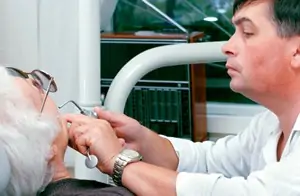 The condition of ankyloglossia, more commonly known as “tongue tie” is characterized by the presence of a piece of tissue that causes the end of the tongue to be stuck to the mouth’s floor. Fortunately, tongue tie is relatively easy to diagnose.
The condition of ankyloglossia, more commonly known as “tongue tie” is characterized by the presence of a piece of tissue that causes the end of the tongue to be stuck to the mouth’s floor. Fortunately, tongue tie is relatively easy to diagnose.
What’s more, when it is properly identified, it is simple to address through a minor surgery. Because tongue tie can lead to other, more serious, issues, it is important that parents of newborn children closely observe their babies to see if they display any of the following signs.
Difficulty with Breastfeeding
A child who suffers from tongue tie may display a difficulty with proper breastfeeding. In order for a baby to breastfeed, he or she must be able to hold his or her tongue over his or her lower gum while he or she sucks the milk. Tongue tie will often prevent the child from being able to do this.
Tongue Tie in Older Children and Adults
If a tongue tie does not cause complications with breastfeeding, it may go undetected until later in life. In older children and adults, it can be indicated by a number of factors. Difficulty extending the tongue out past the front teeth, lifting the tongue up or moving it around may indicate a tongue tie.
Occasionally, tongue tie can be indicated by a tongue that has an odd shape when you stick it out. If the tongue looks like a heart, or looks like it has a notch in it, it could be an indicator of tongue tie.
Regardless of whether you are a parent with a baby who has a tongue tie, or an adult who has the condition, it is easily treated. If you need more information, please feel free to contact us. We are happy to sit down with you and answer your question.


